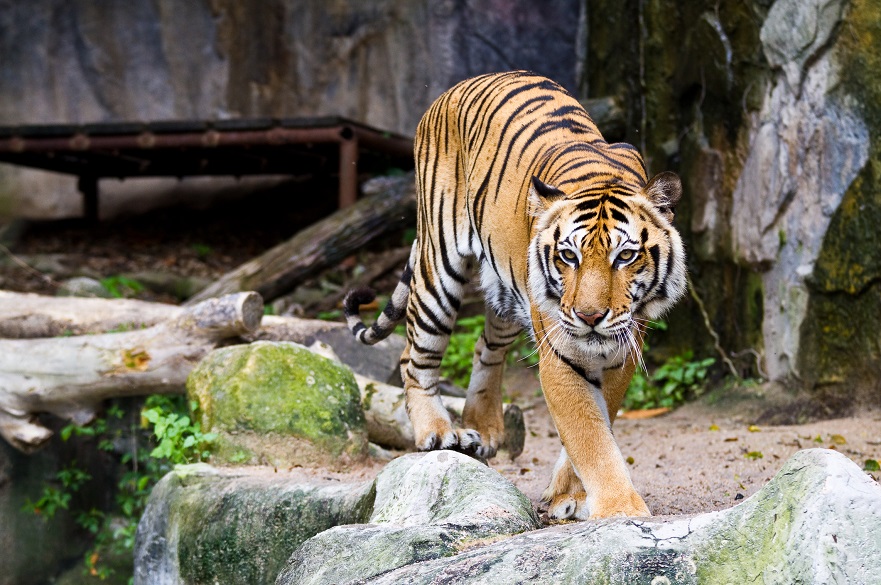Expert blog: The zoo animal matchmaker? Importance of the studbook in pairing captive animals
By James Edward Brereton, PhD researcher in the School of Animal, Rural and Environmental Sciences
Published on 27 February 2023
Categories: Press office; Research; School of Animal, Rural and Environmental Sciences;

Remember the last time you visited a zoo? The average zoo is home to thousands of animals from hundreds of species. You may well have wondered where this bewildering array of species came from.
But to answer this, we must first address the elephant in the room:
Zoos can just collect all their animals from the wild, right?
Nowadays, not quite. In the past collection from the wild was commonplace, but increasing concern for the world’s natural resources means this is now rarely the case. Led by the World Association of Zoos and Aquariums, these collections are dedicated to keeping sustainable populations of animals: populations that will persist in captivity without supplementation and that could be used eventually to repopulate the wild.
The concept of sustainable zoo populations is exciting, but it leaves zoo managers with some major challenges. For example, which animals should be paired up for breeding? And which species should be prioritised?
Let’s look at an example. Imagine your local zoo keeps a male Sumatran tiger (let’s call him Tony, because he’s great). The Sumatran tiger is an endangered species, according to the International Union for Conservation of Nature. It’s important, therefore, that Tony is given the opportunity to breed and pass on his genes to the next generation. Fortunately, the zoo also houses Tabitha, a female tiger: she’s young, healthy and of breeding age. Surely it would be in the zoo’s best interest to pair up these two animals?
Wrong. Tony and Tabitha, it turns out, are siblings. Any offspring resulting from this pairing would be heavily inbred. And inbreeding, it turns out, is associated with a swathe of negative effects like reduced health, genetic defects, infertility, and high infant mortality. In other words, it’s bad news. An inbred population of animals stands a very real chance of dying out simply due to infertility. Zoos, then, need a better plan.
Enter the studbook. Studbooks have had a long history in domestic animal breeding, but they were first applied to zoo animals more recently, with the advent of the European bison studbook in 1932. Nowadays, there are several thousand studbooks that are managed by zoo authorities in regions like Europe and the US. The aim of a studbook is to maintain over 90% of a population’s genetic diversity for a long time period, typically 100 or 200 years.
Here's how it works. The studbook contains information on every individual of a species within a given region. It includes records of their births, parents, offspring, transfers between zoos – and where relevant, their deaths. Using this database, studbook keepers can calculate the inbreeding coefficients and mean kinships of animals. This allows the studbook keeper to generate algorithms that determine which individuals should be paired together.
This sounds simple, but it isn’t. Sometimes, the mean kinship algorithm may determine that the best possible solution is to pair animals housed in different countries, or continents. For small, sensitive species, a cross-continental transfer may be so stressful that the animal refuses to breed following its trip. The studbook keeper must therefore consider not just an animal’s kinship, but also mate compatibility, age and transfer distance. Based on this information, they make informed decisions on which animals should be transferred, bred or contracepted. The studbook also helps to answer other questions that are almost impossible to answer for wild animals: questions on animal sex ratios, successful pairings, and senescence.
Each studbook requires thousands of hours of zoo professional time each year, along with specialist technology to identify good pairings. This has ramifications in terms of staff costing and animal transfers, which may cost thousands of pounds. So why bother with studbooks?
The reality here is sobering. The IUCN record that at least 79 species found in zoos and aquariums are Extinct in the Wild. These species range from deer and macaws, to oryx and snails. Without carefully planned breeding recommendations, these species would rapidly fall prey to the trappings of inbreeding depression after a few generations, and populations would dwindle to an inevitable extinction.
Back to Tony the tiger, then. Based on studbook analysis, he is given the green light to breed. Following a successful transfer to a new zoo in France, Tony is partnered with a female (Trinetta), and successfully sires three offspring. In time, these offspring will be transferred out and partnered up as part of the wider tiger network.
This process is complex, and expensive, but it is ultimately integral to the survival of the species.